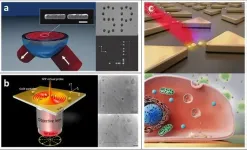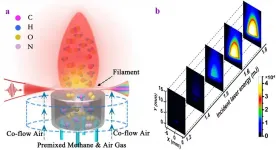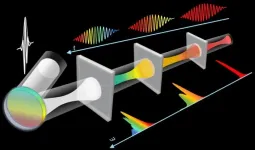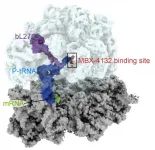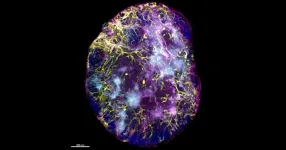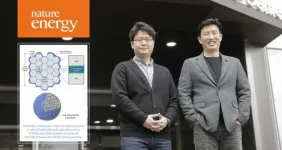The shape of things to come: Shifting rewards are encoded using special neuronal patterns
Researchers from the University of Tsukuba find a new neural pattern that represents changing rewards
2021-03-19
(Press-News.org) Tsukuba, Japan - Animals must make predictions about future rewards when making decisions during daily life. Specific reward-related patterns of neuronal activity are known to underlie such decisions. But now, researchers from Japan have found a new pattern of neural activity that occurs when responding to rewards that are changing over time.
In a study published this month in eLife, researchers from the University of Tsukuba have revealed that dopamine neurons, which process information about rewards, are activated in a previously undetected way when an animal considers a reward that is changing in value.
Previous studies have highlighted the importance of a specific pattern of activity in dopamine neurons, called phasic firing, in processing reward information. Such information has important implications for understanding how organisms successfully regulate reward-seeking behavior. However, this type of activity may not explain all types of rewards--for instance, those that change on a moment-to-moment basis, such as when a customer watches as a bartender pours their drink. The researchers at the University of Tsukuba aimed to investigate this possibility.
"Midbrain dopamine neurons are thought to respond to rewards and reward-predicting cues with phasic activity," says first author of the study Yawei Wang. "However, it seems unlikely that phasic dopamine activity, which is sporadic and has a short duration, can explain continuous monitoring of a shifting reward."
To address this, the researchers trained macaque monkeys to complete a Pavlovian task in which they made judgments about rewards that gradually increased or decreased. While the monkeys completed the task, the researchers recorded the activity in dopamine neurons that process information about the rewards.
"The results were surprising," explains Professor Masayuki Matsumoto, senior author. "Instead of phasic activity, the dopamine neurons fired in a tonic pattern that varied according to the moment-to-moment changes in the reward values."
This tonic firing pattern, which was a more sustained neuronal response compared with phasic firing, was caused by a different type of neuronal activation than that associated with phasic dopamine neuron activity during reward processing.
"Our findings add to the current understanding of how dopamine neurons are involved in rewards by highlighting the existence of multiple neuronal firing modes that signal reward values in specific situations," says Yawei Wang.
Given that dopamine is a powerful neurotransmitter involved in many brain functions, understanding how dopamine neurons process and transmit information is critical to understanding the mechanisms of cognition. This research opens the door to new investigations of the role of the tonic activity of dopamine neurons in reward processing.
INFORMATION:
The article, "Tonic firing mode of midbrain dopamine neurons continuously tracks reward values changing moment-by-moment" was published in eLife at DOI: 10.7554/eLife.63166
[Attachments] See images for this press release:
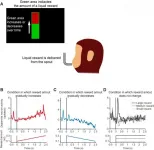
ELSE PRESS RELEASES FROM THIS DATE:
2021-03-19
Optical tweezers and associated manipulation tools in the far field have had a major impact on scientific and engineering research by offering precise manipulation of small objects. More recently, the near-field manipulation with surface plasmons has opened opportunities not feasible with conventional far-field optical methods. The use of surface plasmon techniques enables excitation of hotspots much smaller than the free-space wavelength; with this confinement, the plasmonic field facilitates trapping of various nanostructures and materials with higher precision. It has become commonly used in trapping of micro- and nanometre-sized objects in various fields of science.
In a new review paper published in Light Science & Application, a team of scientists, led by Professor ...
2021-03-19
Laser ignition (LI) is a promising electrode-less alternative to electronic spark ignition of lean fuel/air mixtures, offering high thermal efficiency with low harmful emissions. One of the most widely adopted LI methods is nanosecond laser-induced spark ignition (ns-LISI), in which combustible mixtures undergo multiphoton ionization followed by avalanche breakdown, resulting in high-temperature and high-pressure plasma along with shockwaves. However, inevitable shot-to-shot energy fluctuations resulting from ns light sources lead to the stochastic nature of the breakdown, influencing reaction routes and producing potential misfiring.
Although LI is not a new concept, it is commonly deemed that igniting lean-fuel mixtures by an ultrashort femtosecond (fs) ...
2021-03-19
Generating intense ultrashort pulses with high spatial quality has opened up possibilities for ultrafast and strong-field science. It is so important that the Nobel Prize in Physics 2018 was given to Dr. Strickland and Dr. Mourou for inventing a technique called chirped pulse amplification, which drives numerous ultrafast lasers worldwide. With the great advancement in the last decade, Yb-based ultrafast lasers have become highly popular, because they exhibit exceptional thermal efficiency, are low in cost and are highly flexible in adjusting pulse energies and repetition rates. However, the pulse durations from these lasers are usually not shorter than 100 fs or even 1 ps, which requires external ...
2021-03-19
UNIVERSITY PARK, Pa. -- A new antibiotic compound clears infection of multi-drug resistant gonorrhea in mice in a single oral dose, according to a new study led by researchers at Penn State and Emory University. The compound targets a molecular pathway found in bacteria but not humans and could lead to new treatments for gonorrhea and infections from other bacteria, such as tuberculosis and MRSA.
The research team, which also includes scientists from the biopharmaceutical company Microbiotix, the Uniformed Services University, and Florida State, published their results in a paper appearing March 19 ...
2021-03-19
A new imaging technique is shining a light on immune responses and setting the scene for enhancing immune memory to optimise vaccine strategies.
By imaging intact lymphoid organs in three dimensions, researchers have been able to identify specialised niches, which can determine how immune T cells function.
The research, published in Nature Immunology, is a step forward in understanding the differentiation of T cells - critical cells for developing strong immune responses - and how we can use these crucial findings to inform and optimise vaccine strategies.
At a glance
Three-dimensional imaging has enabled researchers to identify the factors that play a role in determining where immune memory cells locate ...
2021-03-19
Professor Chunghun Lim and his research team in the Department of Biological Sciences unveiled a neuroprotective pathway that suppresses Lou Gehrig's Disease (ALS).
Nucleocytoplasmic transport (NCT) defects have been implicated in neurodegenerative diseases, such as C9ORF72-associated amyotrophic lateral sclerosis and frontotemporal dementia (C9-ALS/FTD). In this study, the research team has identified a neuroprotective pathway of like-Sm protein 12 (LSM12) and exchange protein directly activated by cyclic AMP 1 (EPAC1) that sustains the nucleocytoplasmic ...
2021-03-19
A new coating for lithium-ion batteries (LIBs), developed by scientists at UNIST promises extended driving for future electric vehicles (EVs). The coating, described in a paper published in the journal Nature Energy, when applied to LIBs is shown to have improved cycling stability even after being charged and discharged more than 500 times. As a result, the development of EV batteries that can drive longer distances with a single battery charge has gained considerable momentum.
Distinguished Professor Jaephil Cho and his research team in the School of Energy and Chemical Engineering at UNIST unveiled ...
2021-03-19
Binge drinking in adolescence is associated with changes in the volume of the cerebellum in young adulthood, a new study from the University of Eastern Finland and Kuopio University Hospital shows. Earlier studies have shown that excessive, long-term alcohol consumption causes damage to the cerebellum in adults, but there is very little data on the effects of adolescent drinking on the cerebellum. The findings were published in Alcohol.
The study included 58 young adults aged 21 to 28 years, whose alcohol consumption had been monitored for the previous ten years. Of the participants, 33 had been heavy drinkers since adolescence, while 25 were light drinkers, consuming little or no alcohol at all. All of them were highly functional and had normal ...
2021-03-19
An international research collaboration has used an omnidirectional camera attached to humpback whale to reveal how these creatures rest underwater. These findings demonstrate how wide-angle lens cameras can be useful tools for illuminating the ecology of difficult-to-observe animals in detail.
The research group consisted of Assistant Professor Takashi Iwata of Kobe University's Graduate School of Maritime Sciences, Researcher Martin Biuw of the Norwegian Institute of Marine Research, Assistant Professor Kagari Aoki and Professor Katsufumi Sato of the Atmosphere and Ocean Research Institute, the University of Tokyo, and Professor Patrick Miller of the University of St. Andrews.
These research results ...
2021-03-19
A growing number of studies show that the environmental factors and lifestyle habits of pregnant women play an important role in the health of their child. But how about the semen quality of young men? Researchers at the University of Geneva (UNIGE), Switzerland, showed two years ago that only 38% of Swiss men had semne parameters above the thresholds set by the World Health Organisation (WHO) for fertile men. Epidemiologists from the Institut de recherche en santé, environnement et travail (IRSET, Rennes, France), in collaboration with the UNIGE team analyzed the potential impact of endocrine disruptors on semen quality of men whose mothers were working at the early ...
LAST 30 PRESS RELEASES:
[Press-News.org] The shape of things to come: Shifting rewards are encoded using special neuronal patterns
Researchers from the University of Tsukuba find a new neural pattern that represents changing rewards

